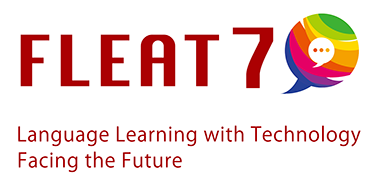60'
Learner Cognition and Orchestration of Strategies in Tandem Language Learning
MUKAE , Haruka (Graduate Student, Waseda University)
MORIYA, Ryo (Graduate Student, Waseda University)
Tandem language learning, defined as one of the learning methods where two people with different L1 work together to learn from each other (Brammerts, 1995, 2001), is referred to as effective strategy training (Otto, 2003), enabling learners to become autonomous (Little, 2003). Although L2 learners inevitably utilize their strategies to interact with the Tandem partner as well as the context during sessions, many studies tended to focus on frequency of strategy use, not optimal use of strategies (Mizumoto, 2018). Moreover, to understand learners’ orchestration of strategies in a particular context, it necessitates what they know, think, and believe (i.e., learner cognition) as well because, from sociocultural perspectives (c.f., Douglas Fir Group, 2016), learners themselves can be one of the indispensable constituents of Tandem learning. Therefore, to address these issues, this exploratory single case study investigates how learners’ cognition and orchestration of strategies are intertwined each other in Tandem learning. A pair of different L2 learners (i.e., Japanese and English) participated in a Tandem session. The session was video-recorded and lasted about 60 minutes. After the session, retrospective semi-structured interview (i.e., about 30 minutes for a person) was conducted with the aim to understand the participants and to contextualize the session for data triangulation (see Denzin & Lincoln, 1994). To analyze their cognition, we applied thematic analysis with no pre-determined framework (see Braun & Clarke, 2006), and microgenetic analysis (c.f., Guti?rrez, 2008) for orchestration of strategies. By showing multiple data sources, some findings specifically focusing on ongoing strategy use in Tandem and changes of their use are to be shared, and this study concludes by discussing some potentials of Tandem learning to foster learner autonomy within and beyond the classroom.
Poster
Corridors on the 6th and 7th floors

